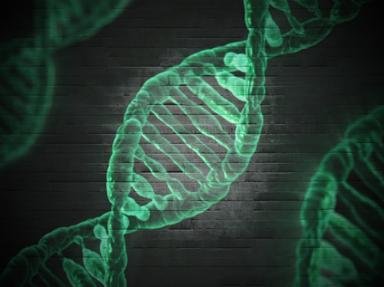Quiz Answer Key and Fun Facts
1. The "genetic code" in deoxyribonucleic acid (DNA) is based on the order of four nucleic acid bases: adenine, cytosine, guanine and thymine. However, what makes up a complete DNA nucleotide?
2. In the DNA double helix, A bonds to T and C bonds to G. What type of bonds hold these bases together?
3. DNA replication can be described as what type of process?
4. Transcription is the process of making a complementary RNA strand from a DNA strand. In eukaryotic cells, where does this process take place?
5. How is a eukaryotic primary RNA transcript processed before being released from the nucleus as mRNA?
6. Translation is the process by which proteins are generated from an mRNA sequence by attaching amino acids to one another. Which specific type of RNA includes the anti-codon loop and is bound to a specific amino acid?
7. There are many different types of compounds which can be classified as amino acids, however, how many different kinds are typically incorporated into proteins?
8. What type of bond covalently links amino acids together in order to form a protein or polypeptide?
9. Translation is carried out on which small cellular structure or organelle?
10. Once a polypeptide is generated through translation, it is folded to make a functional protein molecule. How many levels of structural organization are present in proteins made up of multiple polypeptide subunits?
Source: Author
JeterKrazy
This quiz was reviewed by FunTrivia editor
crisw before going online.
Any errors found in FunTrivia content are routinely corrected through our feedback system.

